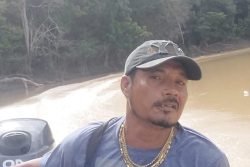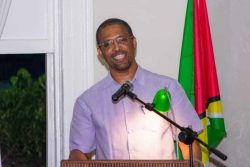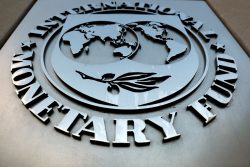Free distribution of 91,000 insecticide treated bed and hammock nets will begin in early June targeting four interior regions well-known as hubs for malaria transmission, according to Vector Control Services (VCS) officials of the Ministry of Public Health (MOPH).
MOPH’s National Malaria Programme will spearhead the distribution campaign of the Long-Lasting Insecticide-treated Nets (LLINs) from June 3-9 in Upper Takutu/Upper Essequibo (Region Nine) in time for the annual heavy rainfall which triggers flooding and other hardships.
A release from MOPH said that the distribution of LLINs will then move to Region 7 (Cuyuni/ Mazaruni) from June 10 -16; followed by sharing from June 17 -23 in Barima/Waini (Region 1) and ending in Potaro/Siparuni (Region 8) in the week of June 24 –30.
In the last five years, the release said that Regions 1, 7, 8 and 9 have accounted for more than 95 percent of all malaria cases in Guyana and the MOPH has begun coordinating transporting the LLINs to the interior Regions with help from the Guyana Defence Force; the Guyana Forestry Commission; the Guyana Gold and Diamond Miners Association; the Guyana Geology and Mines Commission; and the National Miners Syndicate of Guyana (a grouping of 14 smaller syndicates).
The release said that according to the last Multiple Indicator Cluster Survey carried out here in 2014, some 31 percent of the population that resides in the malaria endemic Regions 1, 7, 8, 9 had access to LLINs. That almost 70 percent of the population in danger of contracting malaria did not have this core preventative tool used as a barrier to malaria transmission was a concern to the government.
The release said it is generally accepted that a coverage of 80 percent of the population sleeping under LLINs every night is considered as the minimum coverage needed to have an impact on malaria transmission among the ‘at-risk’ population.
The 91,000 LLINs were sourced with financial backing from the Guyanese government and Global Fund. Dr Horace Cox, Director (ag) of the VCS said that 57,000 of the nets are for residents and the remaining 34,000 for the mobile population comprising mainly miners and loggers in the four “endemic (malaria) regions”.
The anti-malaria campaign faces several challenges, the release said. Firstly, there is limited access to health services in some villages within the four ‘endemic regions’; secondly, in some instances the nearest health service maybe miles away from the villages forcing residents to use alternative treatment such as bush medicines.
Thirdly, there are other challenges to containing malaria spread in the four targeted areas. A major one is the attitude of Regions 1,7,8, and 9 residents. The research concluded that “people do not use repellents when they are exposed to mosquito bites during the hours before bed time.”
Fourthly, permanent and mobile residents “do not complete the recommended dose of treatment even though the treatment is free”.









